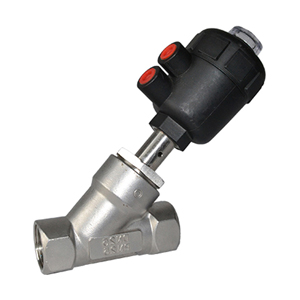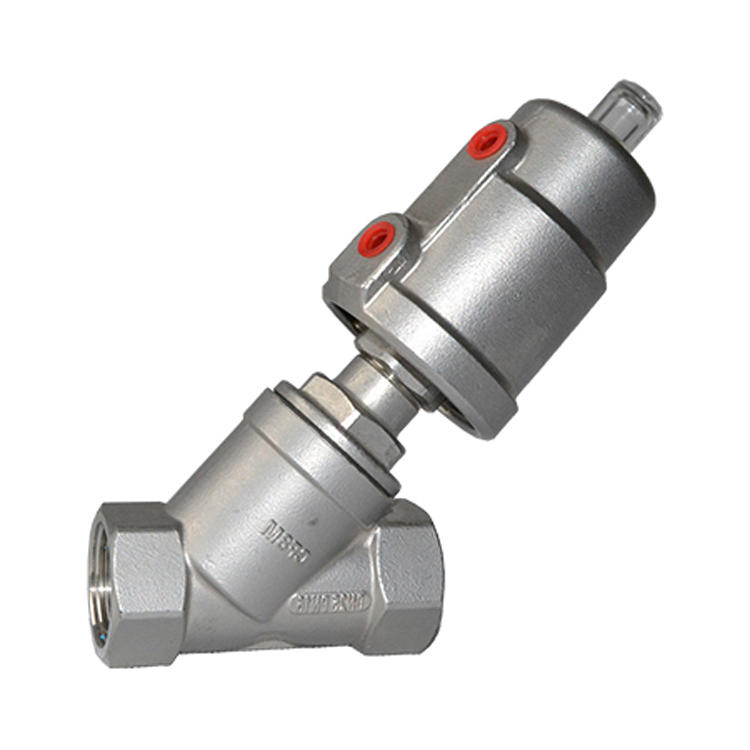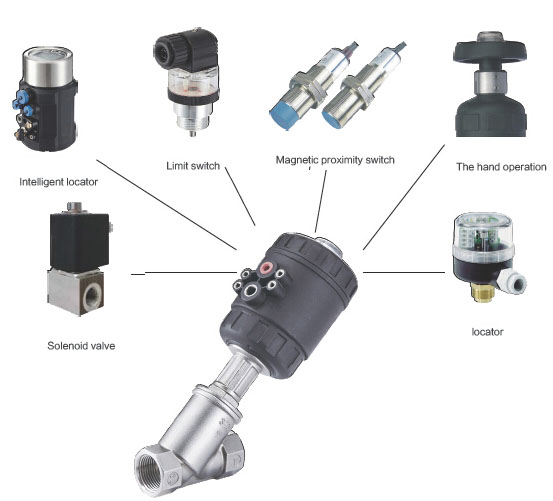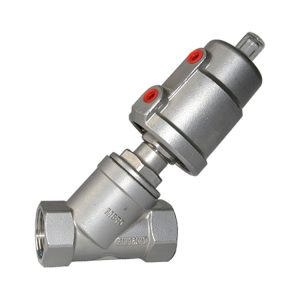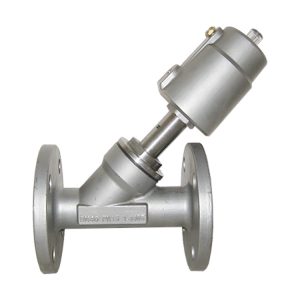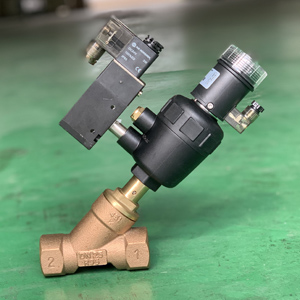Description
Seat valves combine precision and durability for industrial applications. Constructed from Stainless Steel (CF8, CF8M, CF3M) or Bronze with a robust SS316 pneumatic seat angle valve core, they are available in sizes 1/2”~4” (DN15-DN100). Featuring PTFE/RPTFE seats and adaptable connections (thread, flange, welding, clamp), these valves handle Gas, Water, Oil, and more with ease. With pressure ratings of PN16-PN25, ANSI 150LB, and Stainless Steel or polyurethane actuators, configurations include Double Acting, Single Acting Normally Closed, and Single Acting Normally Open.
| Body | Stainless steel, CF8,CF8M,CF3M,?Bronze | |
| Valve core | SS316 | |
| Size | 1/2”~4” DN15-DN100 | |
| Seat | PTFE,RPTFE | |
| Connection | Thread, flange, welding, clamp | |
| Actuator material | Stainless steel, polyurethane | |
| Pressure | PN16-PN25,ANSI 150LB | |
| Medium | Gas, Water and Oil, etc | |
| Pneumatic Actuator | Double acting,Single acting normally closed, acting,Single normally open | |
| Option | solenoid valve,?limit switch box?, filter, E/P positioner, hand wheel | |
FAQ
What industries commonly use seat valves?
Seat valves are widely used in industries such as chemical processing, water treatment, food and beverage production, oil and gas, pharmaceuticals, and manufacturing. Their versatility and durability make them ideal for handling fluids and gases in demanding environments.
What mediums can seat valves handle?
Seat valves are designed to manage a variety of mediums, including gas, water, oil, and other industrial fluids. Their robust construction and PTFE/RPTFE seats ensure effective sealing and resistance to wear, making them suitable for diverse applications.
What pressure ratings are seat valves capable of handling?
Seat valves are engineered to operate under pressure ratings of PN16-PN25 and ANSI 150LB, ensuring reliable performance in high-pressure systems. This makes them suitable for both standard and challenging operating conditions.
Why choose seat valves for industrial applications?
Seat valves offer precise flow control, durability, and adaptability to different systems. With multiple connection options (thread, flange, welding, clamp), high-grade materials like Stainless Steel and Bronze, and advanced pneumatic actuator options (e.g., double acting, single acting normally closed/open), they provide reliability and efficiency in various operational setups.
Are seat valves suitable for automated systems?
Yes, seat valves are highly compatible with automated systems. With pneumatic actuators available in configurations such as double acting and single acting (normally closed/open), they ensure seamless integration into automated processes, improving performance and efficiency.



